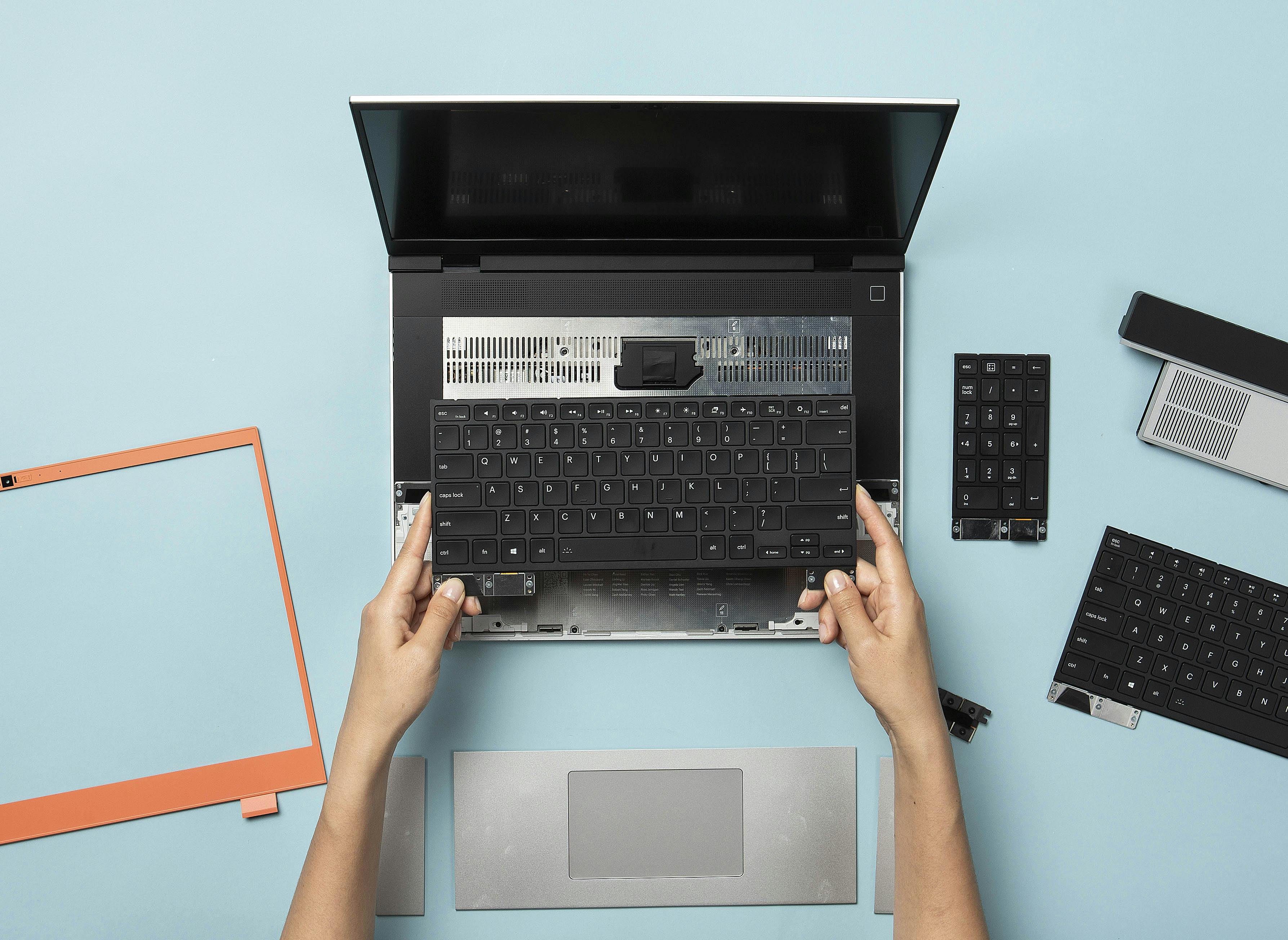Framework Laptop 16 Deep Dive - Enclosure

The Framework Laptop 16 is extremely rigid and durable, while also being surprisingly light and thin through use of a combination of magnesium alloy and machined aluminum parts for the enclosure. The laptop is under 18mm thick, which is unusually slim for a 16” high-performance, upgradeable system. If you choose to add discrete graphics using a Graphics Module, the back section of the laptop extends to just under 21mm thick, enabling much higher thermal capacity for the GPU. This is a substantially more mechanically complex product than the Framework Laptop 13, with a larger screen size, higher performance parameters, and two new module systems with the Input Modules and Expansion Bay. With all of that, we’ve still achieved a clean, minimal industrial design, with no externally visible fasteners.
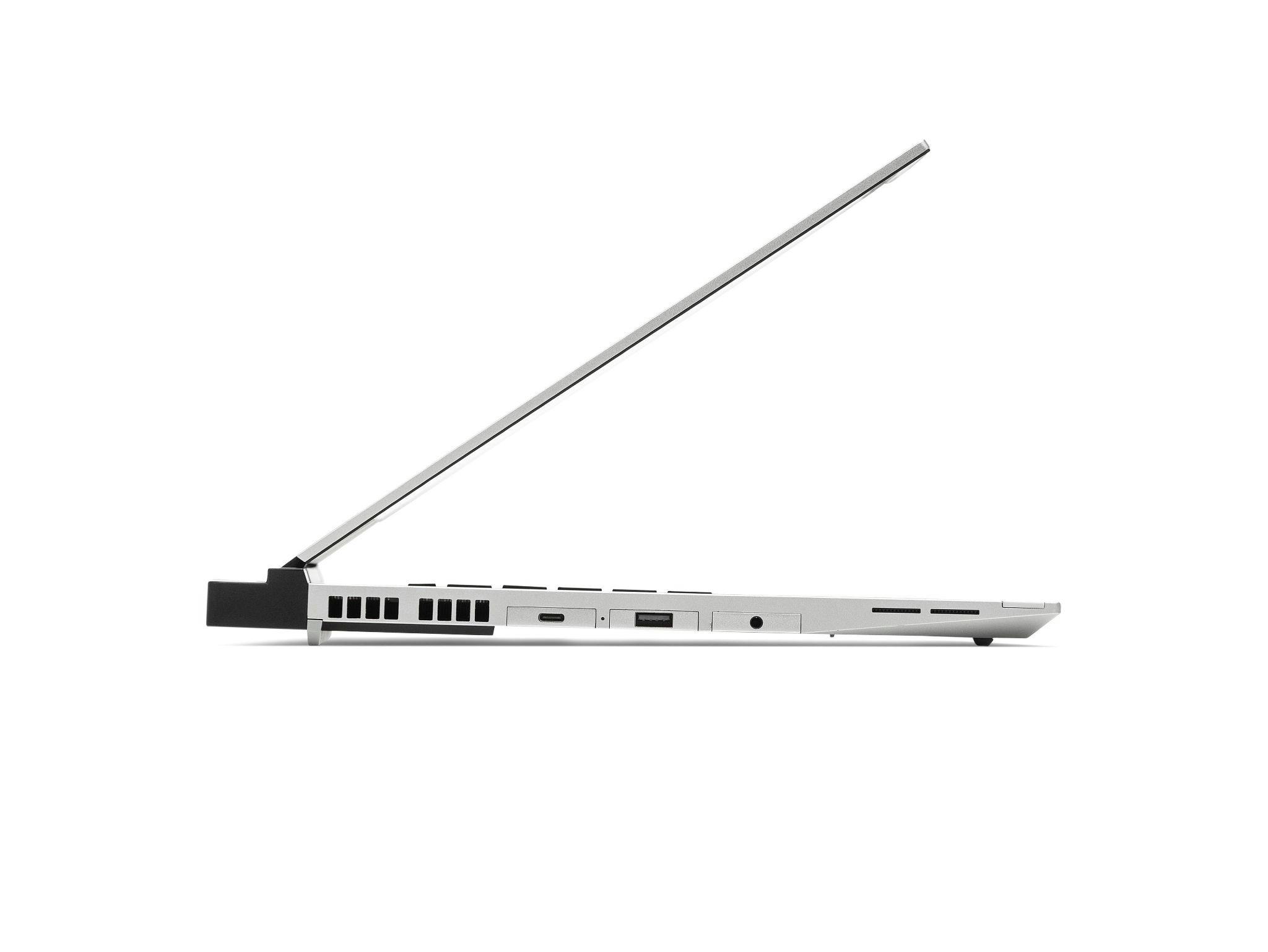
We’ve done this through careful design work, architecting the system to be made of two core mechanical parts: a molded magnesium alloy Bottom Cover and a CNC aluminum Top Cover. Both of these are items we make in collaboration with one of the most advanced enclosure manufacturers in the world, Catcher Technology. We fabricate the parts at Catcher’s massive, highly-automated facility in Tainan, Taiwan, where there are vast fields of molding and milling machines.
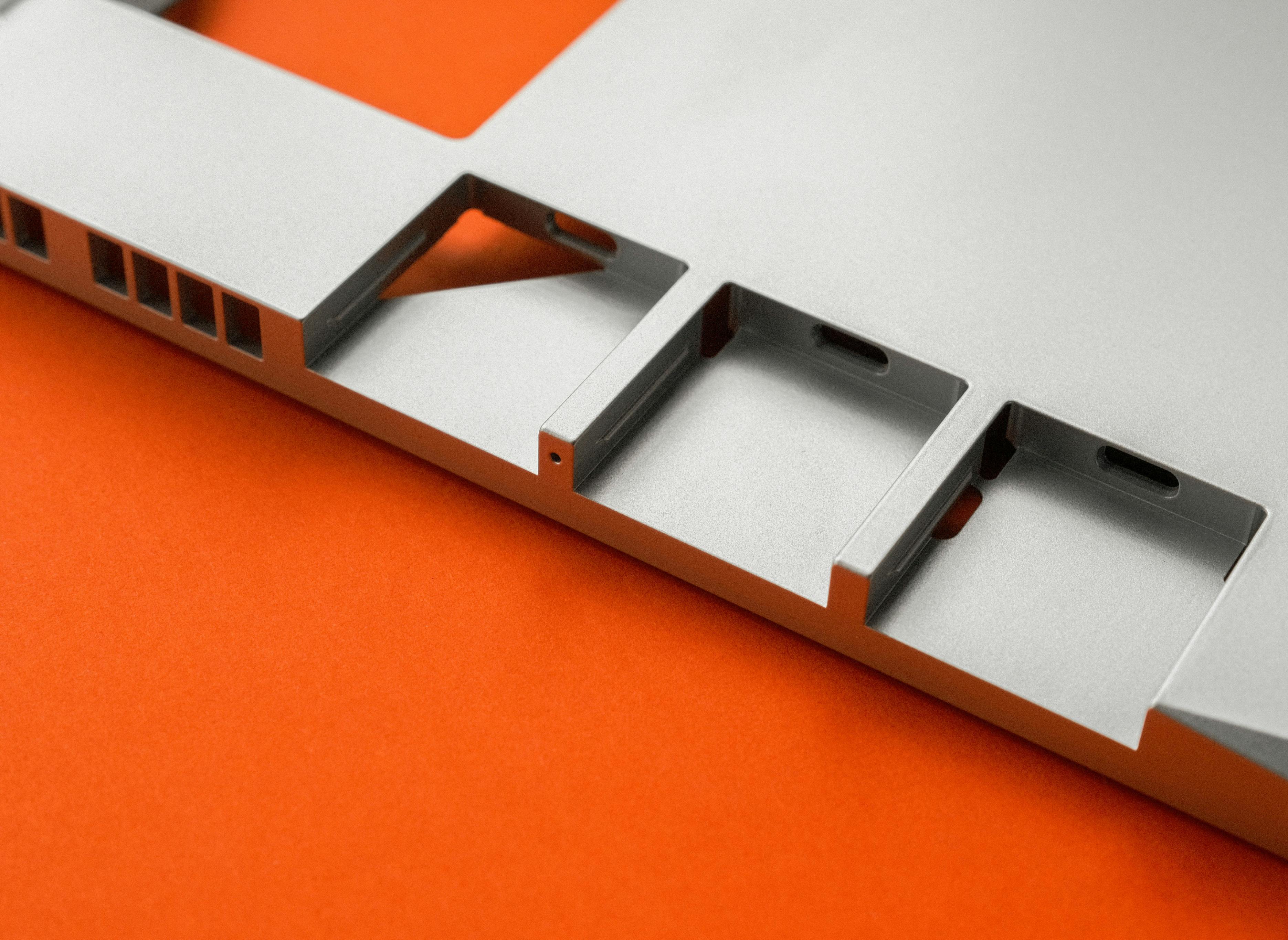
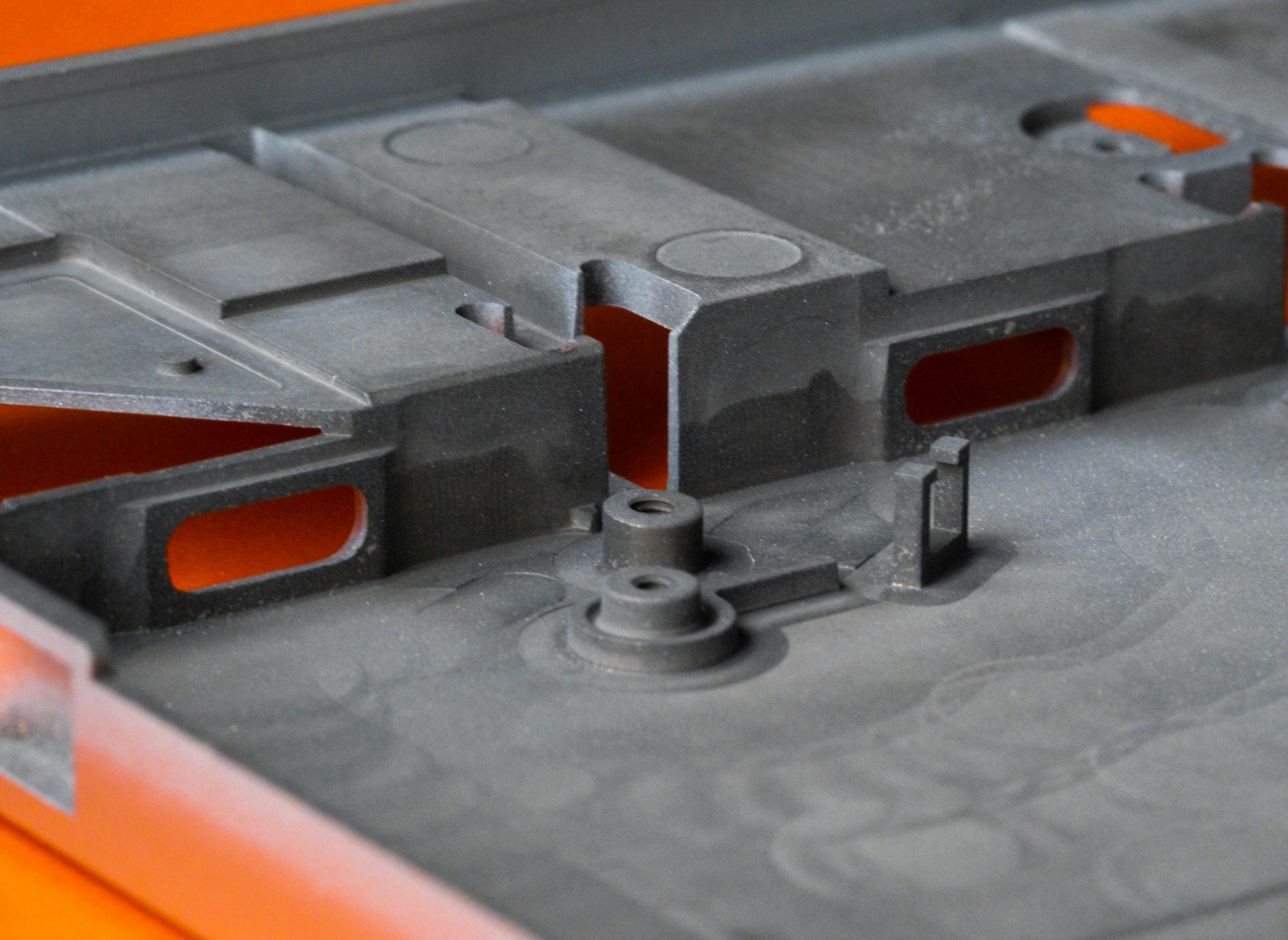
First, let’s dig into the Bottom Cover, which the Mainboard, Battery, Speakers, Input Modules and other key components install down into. This is a single, complexly structured magnesium alloy part, fabricated using a process called thixomolding. Thixomolding is an insanely cool manufacturing technique in which magnesium alloy is heated to a temperature at which it is semi-liquid and then injection molded into custom tooling. This allows for extremely precise large parts with detailed structural elements. We chose this process and material for the Bottom Cover, which is the single largest mechanical part we’ve ever built, to achieve high rigidity while also keeping weight low.
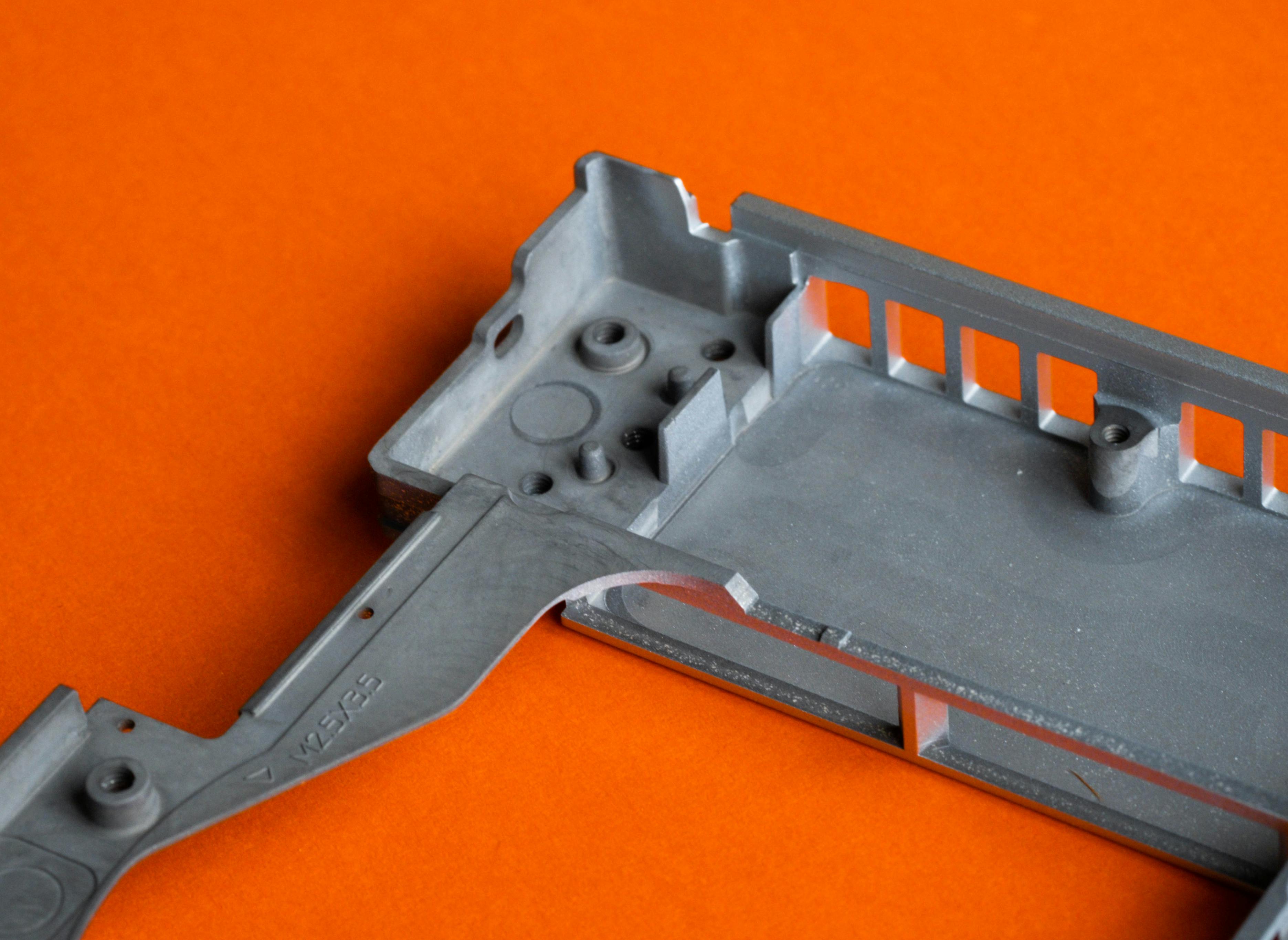
Magnesium alloy is lighter than the aluminum that we could otherwise use, and thixomolding a large part like this also means that we can avoid the processing time and waste material that would come with a CNC aluminum part. A CNC part would need to start as a solid block of aluminum, with the vast majority of the material being milled away, while a thixomolded magnesium part can directly be molded into the correct shape. We perform a small amount of milling for features that can’t be molded and to thin certain areas further, and then use a low-VOC paint process to protect and color match the magnesium alloy. This is a short summary of a process that has dozens of individual steps.
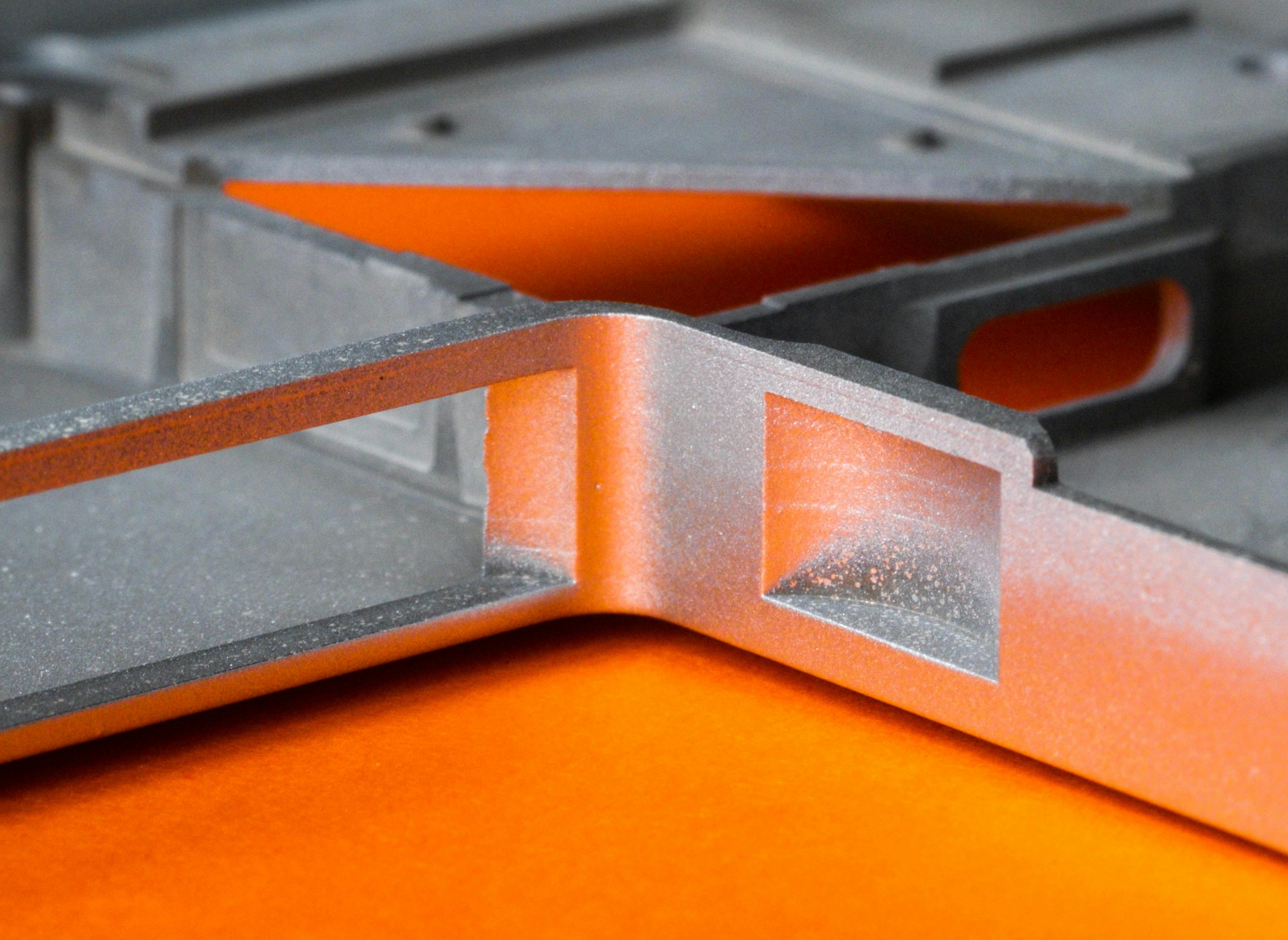
The Top Cover of the Framework Laptop is a CNC aluminum anodized part, just like on the Framework Laptop 13 since our 12th Gen version. Because the Top Cover is thin, the CNC process works well to leverage the strength and durability of aluminum without resulting in a large quantity of waste material. The milled out material is melted down to feed back into future aluminum enclosure material. The Bottom Cover is made of 90% post-industrial recycled magnesium alloy, while the Top Cover is made of 75% post-industrial recycled aluminum. We aim to find post-consumer recycled sources for both of these in the future. In addition to these two main structural parts, there are a number of smaller plastic inner frame and cosmetic parts, along with the magnetic attach, color-customizable bezel. These are all made of 30-35% post-consumer recycled polycarbonate (PC) or PC+ABS plastics.
This deep dive barely scratches the surface of the mechanical advancements we’ve made with Framework Laptop 16. We’ll be continuing to share more detail throughout the year on the mechanisms, materials, and manufacturing processes that let us build a 16” high-performance laptop that is simultaneously thin, robust, and refined, while remaining simple to upgrade, repair, and customize.
